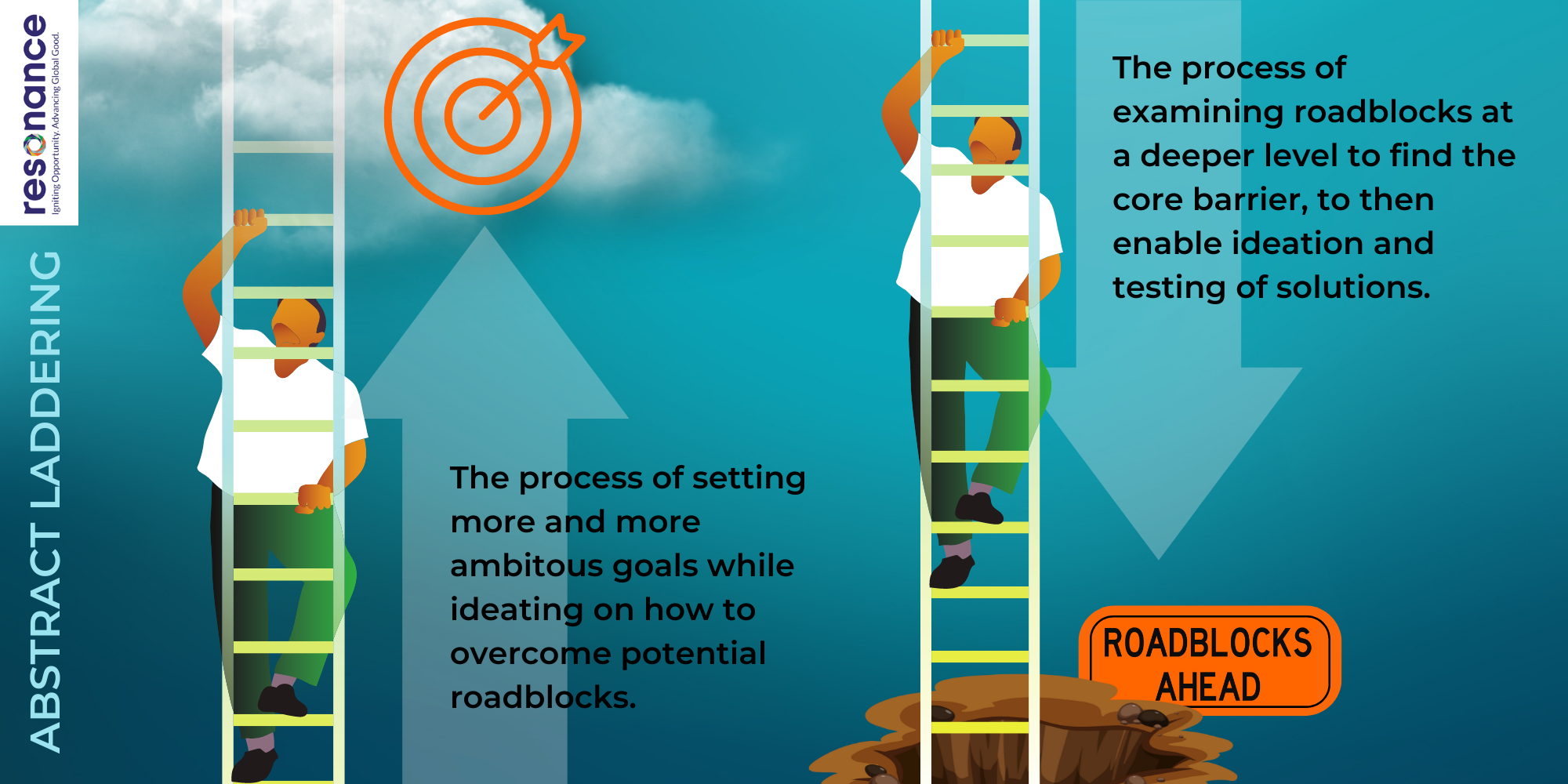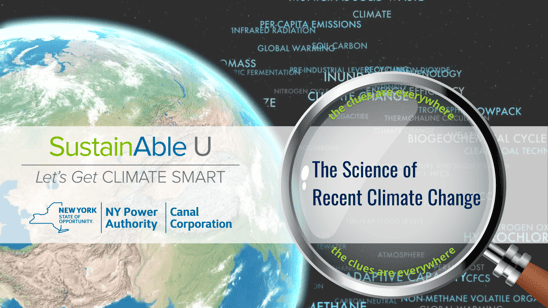Resonance is hosting a series of roundtable discussions with sustainability leaders to better understand the challenges they are facing across their organizations and supply and value chains.
From our first discussion, we identified what leaders described as five overarching best practices that are foundational to these aims as we collectively encounter breakpoint change that accompanies ‘wicked’ problems like climate change and its impacts.
Although there was much agreement about the need to garner stakeholder buy-in and participation at every level for sustainability commitments and implementation– the “how” to get there continues to prove somewhat elusive.
“We are walking right now, but we know very soon we will be asked to run,” seems to be the shared sentiment regarding the pace at which companies are moving.
In keeping with those parameters, sustainability leaders are looking for processes and tools developed either internally or with external partners and experts that will help keep well-planned initiatives on track for the long haul, even when they are at the starting line.
Corporate Sustainability Requires Change and Managing Change Requires Effective Tools
As early initiatives begin to roll out that require others to champion or implement even some small sliver of the sustainability, CSR, ESG, or Scope commitment pie, leaders are already anticipating there will be obstacles that halt movement along their strategic roadmaps or even outright resistance along the way.
These more-than-likely, but sometimes still undetected roadblocks can pose challenges to long-term corporate sustainability goals.
Ideally there should be systems in place to monitor and identify emerging barriers to implementation across the company. This is foundational to success.
But monitoring is only one, albeit critical, piece of the puzzle.
Change management also requires processes and tools to help further clarify these new hurdles as they arise, and the capacity to problem solve swiftly and adeptly to dissolve these barriers and limit systemic disruption. There are many approaches and interventions that have effective applicability.
Here we discuss one that has been widely used across organizational problems that may prove useful in clarifying the kinds of challenges that will no doubt arise as part of implementing sustainability initiatives across the organization.
A Critical Question As A Change Management Tool
This tool is in the form of a simple question, but impactful in that it contributes to subsequent divergent (creative ideas and innovative possibilities) for solutions.
As the title of this article already reveals -- "Why, What’s Stopping You?”
When organizations face and embrace, whether organically or by necessity, seismic level, breakpoint change that extends across supply and value chains, there are several answers to this question that seem predictable, and even on the face reasonable, regarding new undertakings.
Answer: “We don’t have time.”
Answer: “We don’t have the resources.”
Answer: “What you’re asking of us isn’t feasible.”
Answer: “I really don’t see why or how it matters to my work or our company.”
There may be inherent truth in these responses. And employees and stakeholders should not be discouraged from expressing them, as they hold value in applying an initial categorical label the hurdle. But often, to get to the core of the real challenge to problem solve, we need to go deeper.
If you will, imagine your monitoring process has identified a growing hole smack dab in the middle of a pathway of your sustainability roadmap and it’s blocking progress. It’s time to investigate.
Grab your toolbox.
Actually…grab a ladder.
“Why, What’s Stopping You?” Ladder of Abstraction
In Creative Problem Solving (CPS) lingo, the “Why, What’s Stopping You?” question is considered an “Ladder of Abstraction” tool. Here's how it works.
If you start by visualizing the challenge as the center rung of the ladder, the rungs above help you become more aspirational with repetitive questioning as you move on up – “What do you REALLY want to achieve and what is stopping you from getting there?”
You can keep laddering upward until you are able to establish the ambitious goals you envision. And while you are climbing, you are simultaneously identifying potential hurdles that might hinder those goals and ideating on ways to overcome them. 
In this article we describe the use of this tool from the center-defined challenge on down, with each lower rung representing attempts to gain deeper insight on what is stopping someone or entire teams from implementation.
This change management tool can lead to unearthing and exploring problems that may be deeply hidden, allowing the organization to problem solve them before they become major impediments to success.
2 Examples Illustrating the Use of this Change Management Tool
We describe two real scenarios to help illustrate the use of this question-based laddering change management tool and its potential effectiveness in keeping sustainability efforts on track.
Example 1. Shifting Attitudes about the Reality of Global Challenges to Garner Initiative Support
In 2021, the New York Power Authority (NYPA) publicly announced an undertaking to train its entire workforce on the science of climate change, its impacts, and potential solutions, including attentiveness to equity and climate justice.
NYPA's "Let's Get Climate Smart" initiative was novel as a collaborative partnership between the entity and three leading research universities in the state to develop and deliver 4 self-paced online (asynchronous) modules, each followed by facilitated small-group deep-dive discussion sessions (synchronous) across the organization.
This comprehensive educational program was timed with the organization’s ambitious commitments to new state climate legislation, ESG framework and emissions reductions plans, as part of its VISION 2030 and robust sustainability plans.
The initiative was championed by the then CEO with leadership in sustainability as a likely pre-emptive strategy to reduce potential barriers to these aims. In other words, it appears they were anticipating what might be stopping them before they started implementation.
In what ways is this effort considered part of change management?
This major power entity has a diverse workforce across New York – from a corporate center and management hubs that manage the grid, to hydroelectric and generation facilities, canals management, and those who install and maintain and the power lines. Employees live in different regions of the state as well in urban and rural communities. Some are in facilities; many are widely dispersed in the field.
In other words, they are not a monolith and hold diverse viewpoints and framing of global challenges like climate change.
This change management scenario mirrors the question many organizations engaged in sustainability efforts raise as they embark on their initiatives, and it is an attitudinal, behavioral, and cultural one.
Specifically, to what extent can sustainability, ESG, Scope or other commitment initiatives be operationalized without some degree of universal agreement on whether, and to what extent, a real problem exists?
In this case, the problem was “Is climate change really happening?” Equally important, if the problem is real, does it matter to stakeholders and employees personally, to their daily tasks work, or to their employer to drive change?
The hope for this education initiative was likely to move the needle regarding beliefs and attitudes on major challenges the organization is tackling -- a shift that would support current and future initiatives.
Not only would this be critical to the organization's goals, but with employees working in the field across the state, they are unofficial but important carriers of the organization’s sustainability and commitment messaging and backstory to communities and customers.
The “Why, What’s Stopping You?” change management tool can be used at the onset of inittiative roll-out (i.e., “What might stop us?”). It may help an organization identify potential attitudinal barriers, lay the foundation for buy-in that could drive positive behavioral response to major change, and build an external climate upstream and downstream that supports the organization’s efforts.
Example 2. Examining the Feasibility Disconnect Between C-Suite Goals and Inputs Procurement
Many don’t realize, but the paper and forest products industry was one of the first in the US to be committedly engaged in the sustainability movement, even if brought in by external pressure coming out of the first Earth Summit in RIO in 1990. Adjacent to organizations like the Rainforest Alliance and the Forest Stewardship Council (FSC) certification program, the industry undertook developing its own Sustainable Forestry Initiative (SFI) principles through a national trade group.
Working collaboratively through state associations, companies in the forest products industry began implementing initiatives in support of these conservation benchmarks in the form of logger training, forest landowner certification efforts, and public involvement through cross-sector partnerships. They also established third-party external monitoring of efforts ten years in.
Three decades later, this sector still operates under the SFI as well as multiple sustainability and certification frameworks, often simultaneously and convergently, depending on their own corporate commitments and those guiding agricultural inputs and manufacturing processes.
This complex convergence is also often driven by the commitments of distributors and retailers, each with likely different benchmarks, metrics, and chain-of-custody documentation processes.
With emerging global commitments, companies in this sector recognize they are facing significant change, yet again. And although their lengthy experience in implementing sustainability initiatives as well as establishing and meeting certification metrics and tracking processes offers insight, there are still anticipated and unforeseeable barriers – holes -- in their emerging roadmaps.
These pressures often land on wood and fiber procurement managers with dual mandates and responsibilities who are not always at the table when organizations are establishing goals and metrics and identifying priorities. First, they must maintain timber and fiber supply within a delineated “wood basket” to ensure manufacturing continues, a task contextualized by volatile local and regional market forces such as labor availability and costs, trucking, fuel prices, external markets, and shifting competitors for those inputs, among others. They are often incentivized operationally to procure the greatest quantity, best quality, and lowest-priced inputs for finished products.
First, they must maintain timber and fiber supply within a delineated “wood basket” to ensure manufacturing continues, a task contextualized by volatile local and regional market forces such as labor availability and costs, trucking, fuel prices, external markets, and shifting competitors for those inputs, among others. They are often incentivized operationally to procure the greatest quantity, best quality, and lowest-priced inputs for finished products.
At the same time, they are being tasked to establish, track, document, and analyze metrics to meet sustainability and other ESG commitment goals determined at the corporate level, often by people with business backgrounds but perhaps less depth of understanding of timber and fiber procurement.
As a result, the two responsibilities are often at odds, and therein is an immediate answer to the question sitting very shallow in the hole that is the roadmap obstacle:
Answer: “What you’re asking of us isn’t feasible.”
To which the critical probing question must be asked, “Why, What’s Stopping You?”
In this scenario, this Laddering Change Management Tool Could Yield Several Unforeseen Needs and Creative Solutions
Given the complexity of this scenario, asking this question is considered a divergent change management tool. It identifies multiple, possible reasons underpinning roadblocks, as well as creative possibilities for solutions.
In this case, mid-level procurement managers might need to engage in partnership design with external experts who can bring to the table not only process development, but also an array of soft skills including contextual intelligence about the procurement landscape in which this sector is embedded.
And this need might not have been on the radar at the corporate level or even among sustainability leadership, particularly if communication channels in support of initiatives are still being developed or improved.
There may also be opportunities for inclusive innovation, establishing internally cross-departmental, cross-team initiatives with incentives to ideate and test new ideas and solutions to implement and operationalize corporate sustainability initiatives. Or open innovation might yield new strategies.
Whether solutions are generated internally or with outside collaboration, organizations might also benefit from bringing in someone externally with capabilities in change management to facilitate this endeavor and to identify potential collaboration leaders going forward.
“Why, what’s stopping You?” is One of many Tools in the Change Management Toolbox
There are an array of change management tools and strategies that can be used effectively at all stages of sustainability, CSR, ESG, Scope and UNSDG initiatives, from early development, implementation and embedding messaging for operational support, to continual improvement through Monitoring, Evaluation and Learning (MEL).
Resonance has a proven track record designing and implementing effective change management processes built on our extensive work in global development and partnerships, using an array of customized, case-specific approaches. We bring these capabilities to our collaborations with private sector clients as well to help them meet their commitments and goals while driving Sustainable Impact.




